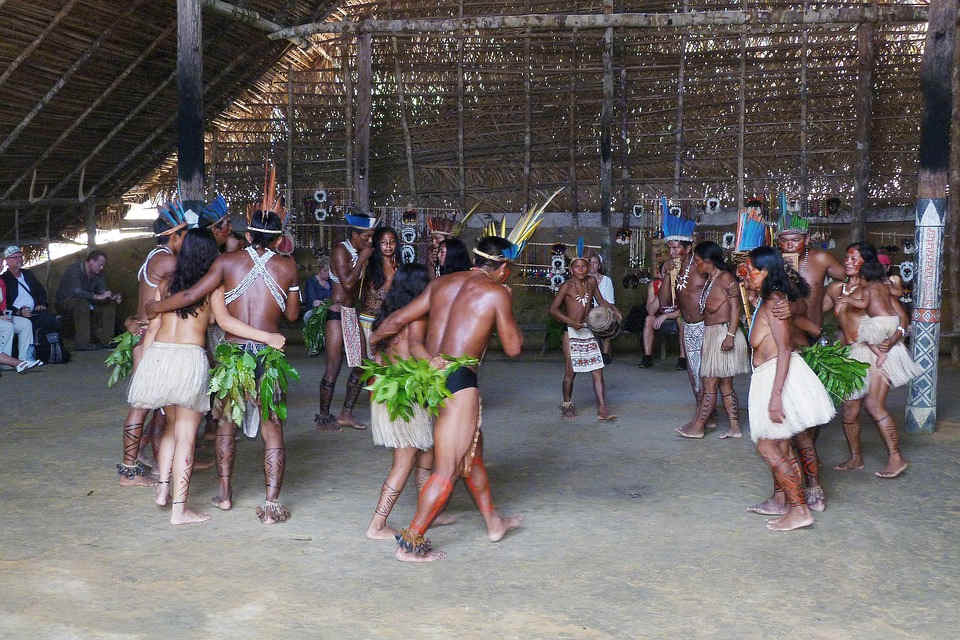
“Imagine a man without lungs. Imagine earth without the Amazon rainforest.”
With these words, the Author Vinita Kinra hit the nail on the head when it comes to the role of the Amazon rainforest in our lives. Just like mankind needs lungs to breathe, our planet needs the Amazon rainforest to breathe and survive.
Not many people are fully aware of its importance and the influence we have on it which is why I am going to give you an insight into the Amazon rainforest and everything you need to know about it.
Facts
The largest rainforest in the world covers 6.7 million square kilometers and spans over eight countries and one overseas territory in South America. It contains a big part of the Amazon basin which itself has a size of 6.9 million square kilometers and covers about 40% of South America. A river basin consists of rivers, creeks, tributaries and wetlands that gather water and deliver it to the sea, as well as its surrounding lands. All living things are connected to it and depend upon it. With a length of 6.400 kilometers, the Amazon River counts as the second-longest river on Earth after the Nile in Africa.

Species
Even though the Amazon rainforest is more than just trees, it is estimated that there could be nearly 400 billion trees standing. Additionally, it contains one in ten known species on Earth and is home to 40.000 plant species, 2.400 freshwater fish species and more than 370 types of reptiles. Thousands of butterflies and birds, as well as endangered species such as pink river dolphins and jaguars, can be found here. Though some of these animals might seem sweet, they are not. The jaguar, for example, counts as one of the most dangerous animals in the Amazon rainforest since its strength could easily kill an adult human being if provoked.
Besides animals and plants, the Amazon rainforest is rich in fruits such as mangoes, bananas and passion fruit. However, there are around 3.000 kinds known to people in those areas. A lot of these fruits build the base for popular food: the Açaí fruit is used in the famous Açaí bowl and cacao beans (from which we make chocolate) are the seeds from Cacao pods which are the fruits of the cacao tree.

People
More than 40 million people have found their homes in the Amazon and are living across a wide region subdivided into nine different national political systems. This includes around 400 different indigenous and ethnic groups of which over 60 remain isolated and choose to avoid contact with the outside world. Due to its diversity, around 300 indigenous languages are spoken throughout the Amazon.
Threats
Before getting into what kind of threats are putting the Amazon rainforest in danger, let us have a look at why this forest is of vital importance to us. Besides the fact that people depend on it for food, water, medicine and wood, it plays a vital role in the subject of climate change. The trees release 20 billion metric tons of water into the air every day. This water vapor creates “flying rivers” in the atmosphere, which influence the regional and global water cycles; in other words, rainfall.
At the same time, an estimated 100–200 billion metric tons of carbon are stored in the Amazon’s soil and trees. The release of carbon accelerates global warming, which brings us to the main threat to the Amazon: deforestation. Every minute, an area of around five football pitches is cut down, constantly releasing more and more carbon into the atmosphere. Other threats include poorly planned infrastructure and the illegal and unsustainable extraction of natural resources. An example would be mining activities that contribute to soil erosion and water contamination. This especially impacts human health and the food chain for wildlife and fish.
All of these factors result in the loss of species and habitat. Approximately, 17% of the forest has already been cut down, an area the size of France. Scientists are saying that the Amazon is close to reaching an irreversible tipping point past which it will no longer be able to sustainably support itself. To prevent this from happening, deforestation should not exceed 20%, and since it is already at 17%, the Amazon rainforest’s future is uncertain.
With that being said, I hope you learned a thing or two by reading this article and now know more about this beautiful and unique place!
Sources:
https://www.wwf.org.uk/learn/fascinating-facts/amazon#main-content (Editors of WWF, May 11th, 2023)
https://www.worldwildlife.org/places/amazon (Editors of WWF, May 11th, 2023)
https://wwf.panda.org/discover/knowledge_hub/where_we_work/amazon/about_the_amazon/ (Editors of WWF, May 11th, 2023)
https://www.wwf.org.uk/where-we-work/amazon (Editors of WWF, May 11th, 2023)
https://www.worldatlas.com/articles/the-most-dangerous-animals-of-the-amazon-rainforest.html (Oishimaya Sen Nag, May 11th, 2023)
https://www.rainforestcruises.com/guides/amazon-rainforest-fruits#:~:text=Mangoes%2C%20oranges%2C%20lemons%2C%20and,the%20people%20of%20these%20areas (Editors of Rainforest Cruises, May 11th, 2023)

